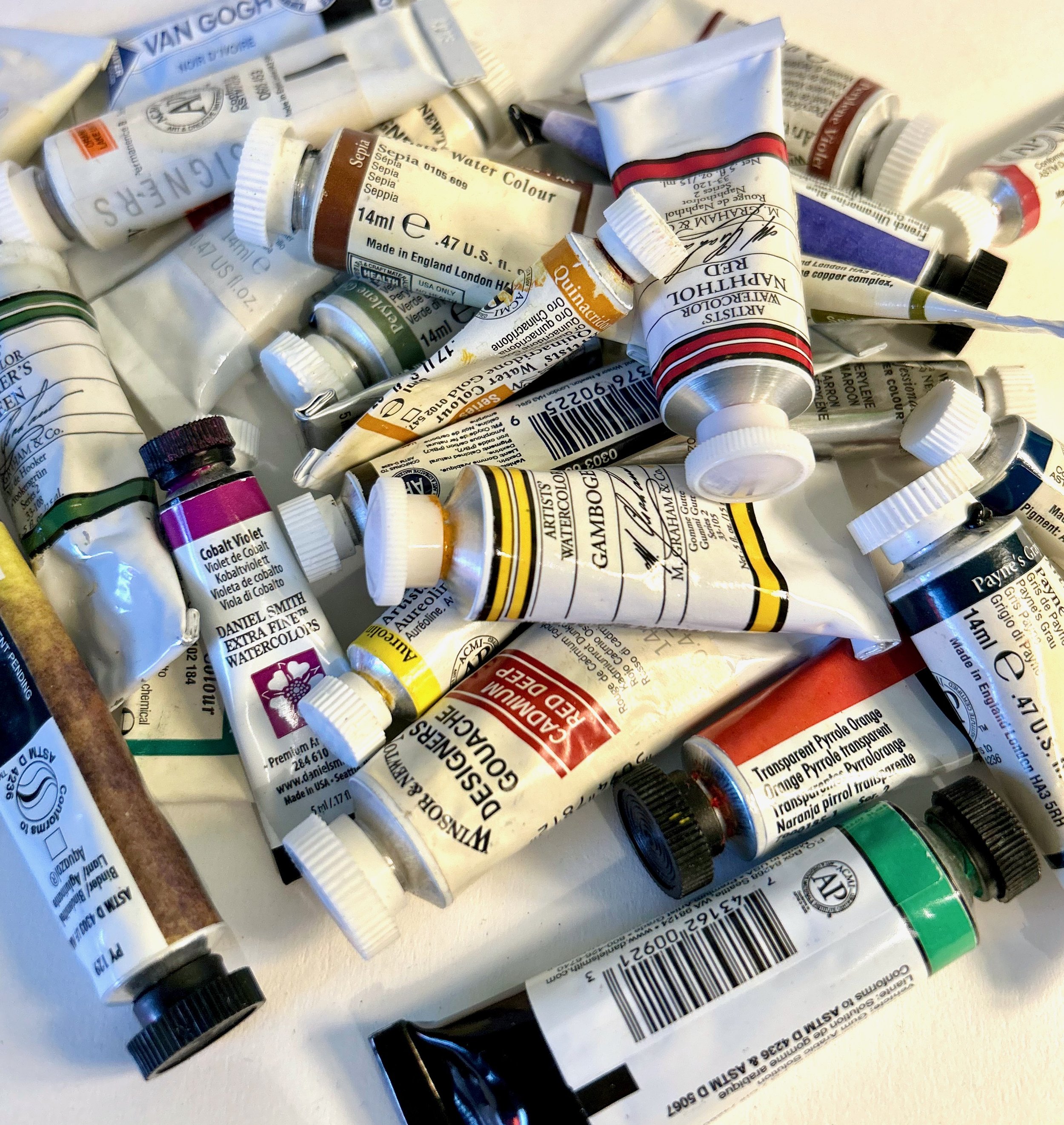
Exploring Paint
Paint is a wondrous thing, made from simple ingredients. In this course we will look at the range of paint, from watercolors to gouache, acrylics and oils. We will explore the chemistry of paint, and the nuances of each type, including some projects. I’ll cover quality brands and help you understand paint before you spend a lot on your own materials.
-
-
Lesson 1: Getting to know your tools
The materials themselves are the most important part of enjoying your experience as an artist. In this lesson we’ll look at all the features of your materials and tools for painting. We will talk about brushes and substrates in detail. Its a quick lesson, but it will help you understand what will work best for you in your painting practice.
The materials themselves are the most important part of enjoying your experience as an artist. In this lesson we’ll look at all the features of your materials and tools for painting. We will talk about brushes and substrates in detail. Its a quick lesson, but it will help you understand what will work best for you in your painting practice.
-
Lesson 2: Chemistry of Paint
Paint is a basic recipe, lending it to be versatile and long lasting, often archival, a good trait for the artists from centuries ago. In this lesson, I will explain little of that chemistry, giving you some ways to manipulate your paint and help you understand the basic differences in all paints.
Paint is a basic recipe, lending it to be versatile and long lasting, often archival, a good trait for the artists from centuries ago. In this lesson, I will explain little of that chemistry, giving you some ways to manipulate your paint and help you understand the basic differences in all paints.
-
-
-
Lesson 1: Watercolor Types and Techniques
Watercolor is one of the simpler types of paint in terms of chemistry, though not in its capability, longevity and pure popularity.
Watercolor is one of the simpler types of paint in terms of chemistry, though not in its capability, longevity and pure popularity.
-
What Materials Will I need?
For this course, you will need a range of brushes in differing shapes and fibers.
You will also need a pad or block of cold press watercolor paper in 11” x 14”, 140 lb. weight.
Lastly, how much paint and what types of paint you purchase for this is ultimately up to you. You can just sit back and watch the entire course without purchasing anything so you can learn about paint. Or, you can dive in and pick and choose what you’d like to purchase. If you want to paint along with me, I recommend downloading the Material List PDF below to see the full recommended list of supplies.